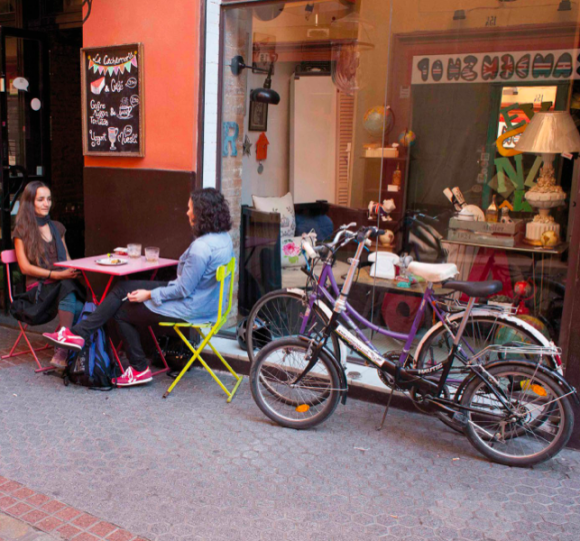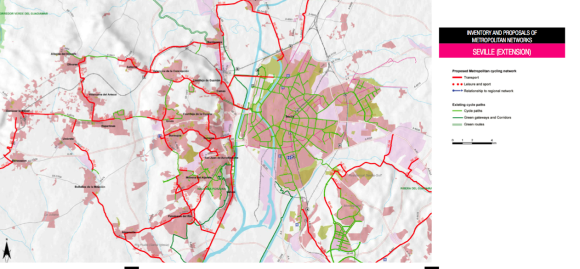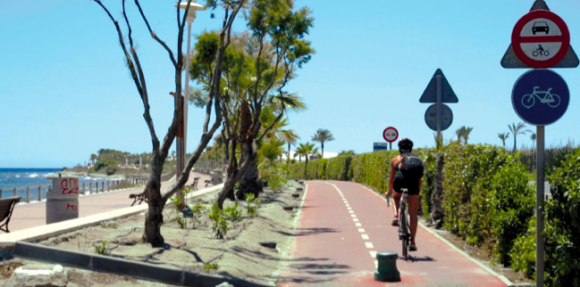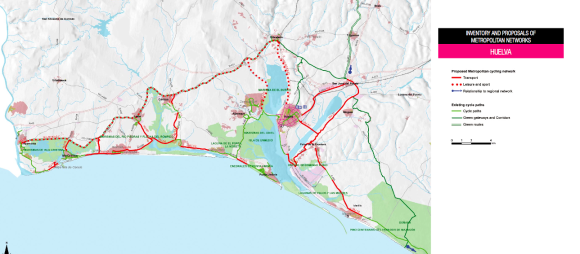
The Cycling Plan of Andalusia - when the South sets the pace
When you think about Andalusia suddenly sun, beaches, flamenco and an easygoing lifestyle come to mind. But, sooner or later, you will also come to think about this spot between the Atlantic and the Mediterranean Sea as a cycling paradise.
This Spanish region is following in the footsteps of its capital, Seville - where the increasing number of cyclists have placed the warm southern European city firmly on the map of the world's most cycle-friendly cities. But how was it possible? As with most great things, it started with a good idea, a group of people who believed in it, a plan, and an absolute lack of fear . If it worked in the Netherlands years ago, why not here?
Spain is dead last in the European rankings for bicycle use with a stunted 1%. Nonetheless, some Spanish cities are implementing local cycling plans, developing infrastructure and bike sharing schemes. Even without a national cycling plan, some municipalities and regions are moving in the right direction. Step forward Andalusia and its 'master plan for cycling'.
The Cycling Plan of Andalusia (CPA) - promoted by the Regional Minister of Development and Housing- with a €400 million budget, is the first pan-regional plan and the largest in terms of objectives and budget, ever implemented in Spain. The CPA includes a wide range of measures like investments in infrastructure (over 5,000km of cycle paths), common technical measures for the implementation of cycling facilities, local programs: raising of awareness, bike to work and bike to school programmes, fiscal incentives and a cycling tourism plan.
The Cycling Plan of Andalusia (CPA) is based upon "probably the greatest success story about (re)emerging bicycle cities in the world, Seville, Spain" as Mikael Colville-Andersen declared when Seville was pointed as the 4th best city in the world for cycling according to the 2013 Copenhagenize Index. The Andalusian capital increased cycling from a 0,6% modal share in 2006 to an impresive 8,9% in 2012 thanks to the development of the Seville Cycling Master Plan that included the construction of a 140km segregated cycle-path network, the implementation of a succesful bike sharing scheme and a new grid of cycle parks in place of car parking.
The commitment to high quality infrastructure, supported in a complete network of bidirectional segregated cycle paths with a common technical criteria were the keys to Seville's success. A network built in one fell swoop that was available for the enjoyment of locals and visitors in a short period of time.
The goal of the CPA is to export the successful experience of Seville to the 10 main Andalusian urban areas (Málaga, Marbella, Almería, Córdoba, Granada...) and in the case of Seville -where the local network is already developed- extending the cycle network to the metropolitan area and implementing pilot schemes like "bike to work" or "bike to school". The target is that by 2020, 7,5% of daily trips in Andalusia will be by bike and 15% in the Seville urban area.
The CPA is not a case of money down the drain, however. The Andalusian Government has estimated that the benefits of the plan in terms of health improvement (decreasing health system bill), reducing work absenteeism and oil imports, the investment will be recovered in just a few years.
The economic benefits: increasing sales for local business and developing the enormous potential of cycling tourism in the region are also significant aims. Andalusia wants to use cycling tourism as an opportunity to solve the seasonal dependence upon Sun, Sand and Sea.
The Autonomous region of Andalusia has also made a strong commitment to the inclusion of Andalusia in the European cycle route network. The CPA specifies the priority of
EuroVelo routes in the development of the regional cycling network. Andalusia is also a member of the ECF's "Cities for Cyclists" network and Sevilla hosted Velo-city conference in 2011.
The timing for this plan couldn't be better. Cycling is becoming a significant means of transportation, more and more young people don't dream of owning a car anymore, and with the culture of "the sharing economy" settling, cycling is strategic.
Furthermore, ConBici -the Spanish National Cyclists' Association- and AMBE -the Spanish Cycling Industry Association- are working on a National Cycling Plan for Spain that will be presented to the Spanish government in the next months. The Cycling Plan of Andalusia is setting the pace for the rest of Spain and other European regions that believed- until now- that cycling was not for southerners.
About the Author
 Jesús Freire Valderrama is EuroVelo Assistant at the ECF. He enjoys riding long distance cycle routes but to the supermarket as well.
Jesús Freire Valderrama is EuroVelo Assistant at the ECF. He enjoys riding long distance cycle routes but to the supermarket as well.
"More people cycling, better public spaces"
- Log in to post comments
Contact the author
Recent news!
Upcoming events
Contact Us
Avenue des Arts, 7-8
Postal address: Rue de la Charité, 22
1210 Brussels, Belgium















